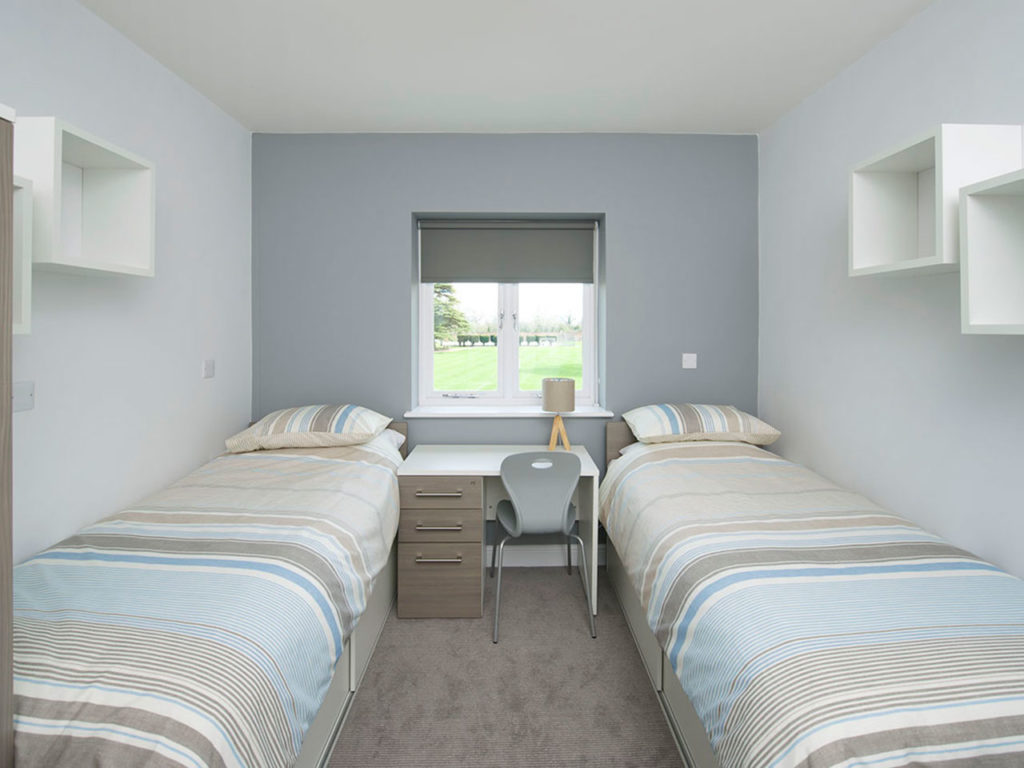Here is so much to consider when refreshing or building a new boarding house. Whilst some of the necessary changes may seem like common sense, it’s always useful to have a quick check over to make sure you are in line with all the necessary guidance and UKstandards.
We have outlined 10 things that you will need to consider (in no particular order)
1.Getting the privacy balance rightFor boarding students, both full and part time, getting the correct home-from-home feel at your school is crucial. Whilst it is important to make sure that each student has easy access to private areas for reflection or a private chat, is also important to make sure that these boarding house design spaces can still be supervised and aren’t a secluded corner for bullying. Communal spaces are an important aspect to boarding life too, and spaces like common rooms, kitchens and washing areas are places where relationships are built that last a lifetime.
2. Allowing students to personalise their space Keeping the room design neutral is crucial to giving students ownership to their space. Allowing students to personalise their space lets them create a space where they can feel happier and more at home. And if that means clothes on the floor sometimes then…
3. Get the right amount of students in each bedroomFor younger students, numbers of up to 4, 5 or 6 may work. As students mature, smaller groups tend to work better. Rooms of 1 or 2 give students company but also allow for needed quiet working or relaxation time.For sixth formers, individual study bedrooms work best as they allow for necessary privacy as well as focussed study space. Communal spaces within the boarding houses where students can prepare food and relax together will still foster a good community spirit.
4. Recreation space
Boarders should have a range of different safe recreation spaces. Both indoor and outdoor spaces and places where students can mix with peers or spend time alone are necessary. Indoor spaces may need to house a wide range of activities, anything from quiet space for puzzles to a communal table tennis space. Opening up the main school facilities for activities like DT or sport will help provide your students with an enriched boarding experience outside of school hours.
5. Washing and laundry facilities Suitable toilet and washing facilities need to be provided for your students. Toilet facilities should be separate for boys and girls unless the toilet or washing facility is self-contained and intended for use by only one pupil at a time. Washing facilities should also provide adequate privacy for your boarders. A shared bathroom arrangement works well as it encourages students to mix and interact informally, thereby building relationships.Laundry and cleaning staff also need to be accommodated in your boarding house design. When redesigning a boarding house, you can create spaces for specific purposes that help make life easier for auxiliary staff members.
6. Ensure that there are equal opportunities and promote shared interests.Within most boarding schools, there is a wide range of non-curricular activities available to boarders. Housing students with similar pursuits (e.g. sport or music) together is a good way to foster talent and build life-long relationships. You will also need to be aware of cultural interests and lifestyles
7. Understand how you are going to accommodate flexi-boarding and day students as needs arise.Flexi-boarding arrangements differ from school to school. In some schools a large majority of boarders areflexi-boarders which can lead to it’s own challenges, in other schools flexi-boarding is less popular. Having your boarding house designed appropriately will enable a flexi-boarding arrangement to run smoothly without disrupting students that are boardingfull-time. This can be accommodated in a number of ways, from movable walls to allocating bedrooms appropriately –speak with one of the team to discuss your specific needs.
8. International studentsInternational students have different boarding expectations to UK students. Be aware of these expectations, and accommodate these in your boarding house design.
9. What else will you use your boarding house for?Some schools re-purpose their boarding houses for extra uses outside of term time. Whether you’re looking to accommodate conferences or summer schools, it is wise to pay attention to the other uses needed from the space and ensure your design accommodates this. However, always bear in mind the primary purpose of the building, and build a student-centred boarding house (not a conference-centred boarding house!)
10. Is your space design in-keeping with the heritage and ethos of your school?Take into account the overall ethos and vision of your school when designing your new boarding house. By adopting a user-centred design approach to your project, you can ensure the best long-term success from your project.For more details on boarding standards, download the government’s Boarding School Standard.



